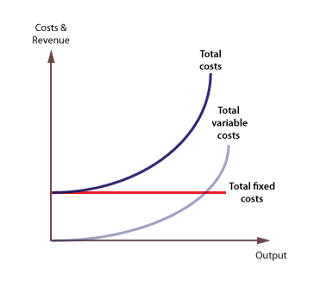The Mystery of Chi-Square Test: A Comprehensive Guide by Essay Tips
In
the field of statistical analysis, the Chi-Square test is a highly applicable
method known for its flexibility and strength. Understanding the Chi-Square
test is crucial for diving into scientific research or navigating business
analytics complexities. In this manual, we will take a deep dive into
unraveling this statistical instrument, examining its principles, uses, and
importance in different areas.
Can you explain the Chi-Square Test?
The
Chi-Square test, also referred to as the χ² test (chi-squared test), is a
statistical method used to ascertain the independence or relationship between
categorical variables. It determines if the observed categorical data shows a
significant difference from what would be anticipated based on a null
hypothesis of independence.
Applications in Various Fields:
The
Chi-Square test is used in scientific research to analyze data from genetics
experiments, evaluate the distribution of traits in offspring, and study the
outcomes of medical trials. For example, scientists researching the way genetic
traits are passed down can utilize the Chi-Square test to see if the ratios
they observe match the ratios predicted by Mendelian genetics.
1.Commerce
and Administration:
Business
analysts use the Chi-Square test to examine customer preferences, evaluate
market segmentation, or analyze survey data regarding consumer behavior. For
instance, a marketing group could employ the Chi-Square test to evaluate the
connection between consumer product preferences and demographic variables like
age or income.
2.Healthcare
and Nursing services
In
the field of healthcare, Chi-Square tests are used to evaluate treatment
efficacy, study disease prevalence among various demographics, and analyze
patient satisfaction surveys. Healthcare providers could utilize the Chi-Square
test to assess patient outcomes with different treatment protocols or to
pinpoint inequities in healthcare access across diverse population groups.
3.
Education
Chi-Square
tests are used by educational researchers to analyze teaching method
effectiveness, assess educational intervention impact, and evaluate
standardized testing outcomes. For example, researchers could utilize the
Chi-Square test to examine the link between various teaching methods and
student success on standardized exams, guiding the development of
evidence-supported teaching methods.
What is the process of the Chi-Square Test?
The
Chi-Square test assesses the discrepancy between observed and expected
frequencies of categorical data assuming variables are independent. It computes
a χ² test statistic by comparing observed and expected frequencies. The
Chi-Square distribution is followed by the test statistic, and the significance
of the relationship is assessed by comparing the Chi-Square value with critical
values from the distribution.
Practical Examples of Scenarios:
1. Market Research
Imagine
if a marketing agency wishes to evaluate the correlation between gender and
consumer product preferences. A survey is conducted, in which participants are
requested to specify their gender (male/female) and their favorite product
category (electronics, fashion, or sports gear). Once the data is gathered,
they conduct a Chi-Square analysis to establish whether there is a notable
correlation between gender and product choice.
|
Gender |
Electronics |
Fashion |
Sports Gear |
|
Male |
50 |
30 |
20 |
|
Female |
40 |
50 |
30 |
Interpretation:
The Chi-Square test results reveal p-value of 0. 0.023, which is lower than the
significance level of 0.05. 05. Hence, we can conclude that there is a strong
relationship between the gender of consumers and their preference for certain
products.
2.
Educational Assessment:
For
instance, consider a study examining how different teaching methods affect
students' math performance. Students are assigned randomly to three different
groups: Group A receives traditional teaching, Group B receives online
teaching, and Group C receives hands-on training. After the intervention,
students' progress is evaluated with a standardized exam, and ANOVA is used to
analyze the results.
|
Group |
Mean Score |
|
A |
75 |
|
B |
82 |
|
C |
78 |
Interpretation: According to the ANOVA results, the mean scores of the three groups are statistically significant (F(2, 87) = 4.32, p = 0.018). A post-hoc test shows that the mean score of Group B (online instruction) is significantly higher compared to Group A (traditional instruction).
Difference Between ANOVA and Chi-Square:
1. Nature of Variables:
ANOVA
(Analysis of Variance) is used for comparing continuous variables means between
two or more groups.
Chi-Square
test is applied to examine the link between categorical variables and determine
whether observed frequencies differ considerably from the expected ones.
2. Type of Data:
ANOVA
is suitable for numbers of data sets, e.g. test scores, measurements or
ratings.
Chi-Square
test is good at dealing with categorical data, like gender, preferences, or
survey answers.
3. Test Statistic:
The
F-statistic, or the ratio of variability between groups to variability within
groups, is computed using ANOVA.
By
using a Chi-Square test, one may determine the difference between the observed
and anticipated frequencies and generate a Chi-Square statistic.
4. Assumptions:
ANOVA
relies on the normal distribution of the data and the equality of variances
across groups.
The
Chisquare test makes two assumptions: that the anticipated frequency is not too
low and that the observations are independent.
5. Interpretation:
An
ANOVA significant result shows that the average of at least one group is
different from the others, but it does not specify which group or groups are
different.
A
significant result from a Chi-Square test indicates a significant association between
two variables, but it does not specify the kind or strength of the
relationship.
In
the end, despite their comparable applications in hypothesis testing, ANOVA and
chi-square tests differ in the kinds of data they may be used with and their
functions within statistical analysis.
FAQs:
When should Chi-Square test be used?
A: When analysing categorical data, one ascertains the meaning of the link between variables with the Chi-square test. frequently used together with ordinal and nominal numbers. The best choice is the Chi-Square test when you have two categorical variables and would like to establish whether they are independent or not.
Q: In the Chi-Square test, what is the null hypothesis?
A: The null hypothesis states that the two category variables under study have no connection. Explained in another way, it means that the variables are not related to each other. In contrast to this, the null hypothesis posits that there is no link between the induced variables.
What does the Chi-Square test say about the results?
A: The null hypothesis is supported if this p-value is less than or equal to the alpha level. When p-value is less than 0, the null hypothesis is rejected. 05 that it reveals that there are sizable differences between what would be predicted by it and the actual data. This shows the role of these factors in practice.
Is Chi-Square test applicable on large datasets?
A: Given the preconditions of this test and as long as the expected frequencies are not too low, it may be applied to large datasets. Like other statistical tests, it is important to be cautious when making assumptions and to ensure that the test is applicable to the specific data and the topic of the research.
Conclusion
The
Chi-Square test is a vital statistical instrument in analyzing the correlation
between categorical variables. Besides in social networking, economic analysis,
and scientific research, it can help you to base your decisions on sound
statistical principles. You can suggest hypotheses, discover previously
unsuspected patterns and contribute to the progress of your field with this
powerful tool.
At EssayTips, we will help you on your research and statistics assignments. Watch our practical Chi-Square Excel tutorial on our YouTube Channel.
WATCH MORE




Comments
Post a Comment